What is a headlight retrofit kit
A headlight retrofit kit is an integrated assembly of high beam or low beam light that is designed to upgrade the existing system from halogen to HID, LED, or laser without replacing the legacy headlight enclosure. This product varies from the HID or LED conversion kit which provides only the light bulb for lamp retrofitting.
A headlight retrofit kit is a single-beam or dual-beam module that is holistically designed and constructed to fulfil optical control, power regulation, and thermal management for the integrated light source. LEDs, which are all the rage these days, are interdependent upon the thermal, optical, electrical and control system applied. Simply replacing the light source provides limited benefits. A systems approach to lighting engineering allows the light source to last longer with effective heat sinking and tight load regulation while providing precisely controlled light distributions for optimal road visibility and glare control.
System design of conventional headlights
A vehicle headlight system is generally configured to switch between low and high beams based on driving conditions. The low beam (passing beam) is designed to provide adequate forward and lateral illumination with a sharp, asymmetric cutoff preventing significant amounts of light from being directed into the eyes of drivers of preceding or oncoming vehicles. High beam (driving beam) headlights provide illumination beyond the range of the low beams. They throw light far enough to maximize visibility but would expose other drivers, bicyclists, and pedestrians to more discomfort, distraction, or glare than would be seen with lower beam headlights.
Conventional vehicle headlights can be divided into reflector and projector systems depending on the optical design. Reflector headlights use a large parabolic reflector to yield the overall desired light distribution. Projector beam headlights produce a sharper, more focused beam of light thanks to the use of a hybrid optical system. The projector headlight directs reflected light through a projection lens which produces a more focused beam of light with less scatter loss when compared to reflector headlights. The removal of light that causes glare is performed by a light shield, which is inserted into the light path thereby creating the sharp beam cutoff.
Halogen bulbs
In the past, halogen bulbs were the dominant choice of light source for vehicle front lighting applications. Halogen bulbs produce light by heating the tungsten filament to the point of incandescence. The filament resides in an airtight glass envelope filled with halogen gas. At elevated bulb wall temperatures, the presence of this halogen in the bulb triggers a chemical reaction known as the halogen cycle whereby evaporated tungsten molecules combine with the free halogens to form a tungsten halide compound. The resulting compound decomposes when it hits the hot filament and is redeposited on the filament, while releasing halogen to again react with evaporated tungsten. Because of this recycling, the tungsten will not settle on the bulb wall to blacken it and the life of the filament is dramatically extended.
The use of quartz glass envelopes allows halogen bulbs to operate at a high pressure, which not only retards the tungsten evaporation but also enables high temperature operation for higher color temperatures and greater efficiencies. Improved design increases the lamp life by a factor of 2 and higher and the luminous efficacy by 15 to 20% as opposed to incandescent lamps. But nevertheless, the efficiency of halogen bulbs is still very poor. Achieving a sufficiently high light output would need a tremendous amount of power that will drain on the vehicle battery. The need for more efficient yet powerful headlight systems drove the shift towards more advanced technologies.
HID lighting
Headlight performance took a leap forward with the use of high-intensity discharge (HID) lighting technology. HID lamps produce light by striking an arc across two electrodes in a pressurized tube. The pressurized tube is filled with xenon gas and mercury. The xenon gas acts as a catalyst that excites mercury to enter into a plasma state and release large amounts of visible radiant energy, which translates to a luminous efficacy three times higher than that of halogen bulbs and the ability to emit light in daylight white. With no filaments to burn out, HID bulbs outlast halogen bulbs. A ballast is required to regulate their voltage and current so that a sufficient voltage is applied between electrodes to excite the gaseous medium and the current flowing through the lamp can be prevented from rising to the point that the lamp would burn out. Some multiple-beam headlight systems use only the xenon technology for their low beam, with high beam provided by separate halogen lamps. Bi-xenon setups, however, perform the high beam function as well as the low beam from the same set of HID lights, thereby providing significantly improved visibility over halogen high beams. A solenoid-operated shutter in the bi-xenon HID projector system produces the cut-off prescribed for low beam light.
LED technology ushered in a lighting revolution
LED technology is at the heart of recent innovation in the vehicle lighting industry. The exceptional benefits of LED lighting include low energy consumption, long lifespan, solid state durability, instant on/off ability, instantaneous dimmability over a full range of intensity, the ability to engineer the spectral power distribution (SPD) for the function of light, excellent optical controllability and greater design freedom due to the small source size and directional radiation.
Design and construction of an LED headlight module
An LED headlight module is constructed around the light source to provide the required thermal management and optical regulation. Integrated design maximizes optical delivery efficiency and beam performance. Ceramic-based high power LEDs or chip scale packages (CSP) LEDs are typically incorporated in the headlight modules for their superior efficiency and lumen maintenance at high drive currents.
LEDs are self-heating devices and suffer from temperature-dependent failure mechanisms. It is crucial to provide a high efficiency thermal path which extracts heat from the active region of the LED and dissipates it to the ambient atmosphere to avoid thermal buildup within the LED. While passive heat sinking is always preferred for its reliability and power-free operation, there is a strong justification for using active cooling (forced air convection) because of the space constraint.
Aside from effective thermal management, it is important to keep the power flowing through the LED at its rated level. The driver circuit should be designed to protect the LEDs from electrical overstress (EOS) events and compensate for input voltage fluctuations. Equally important is to suppress electromagnetic interference (EMI) generated during high frequency switching regulation.
Laser technology is making its way into high beam lighting
After LED technology, laser lighting is the next logical innovation in headlight development. Laser diodes are p-n junction devices which operate on similar principles as that of the phosphor-converted LEDs. However, they distinguish themselves from the LEDs with the ability to produce a stream of coherent and highly directional photons that is ideally suited to high beam applications. Laser light sources produce radiant energy predominantly by stimulated emission whereas LEDs emit light produced in a spontaneous emission process. At sufficiently high carrier injection, the stimulated emission in the active region between the p-doped GaN and the n-doped GaN exceeds absorption, exciting other atoms to yield coherent photons for an amplified output.
With light amplification by stimulated emission of radiation, LDs can achieve higher efficiency at high current density and be driven at high power density for higher lumen output because they do not suffer from the well-known efficiency droop effect that affect LEDs. LDs deliver the highest flux density available of any light source, which allows laser high beam headlights to throw a much brighter, cleaner, more far-reaching beam of light onto the road than traditional headlights can.

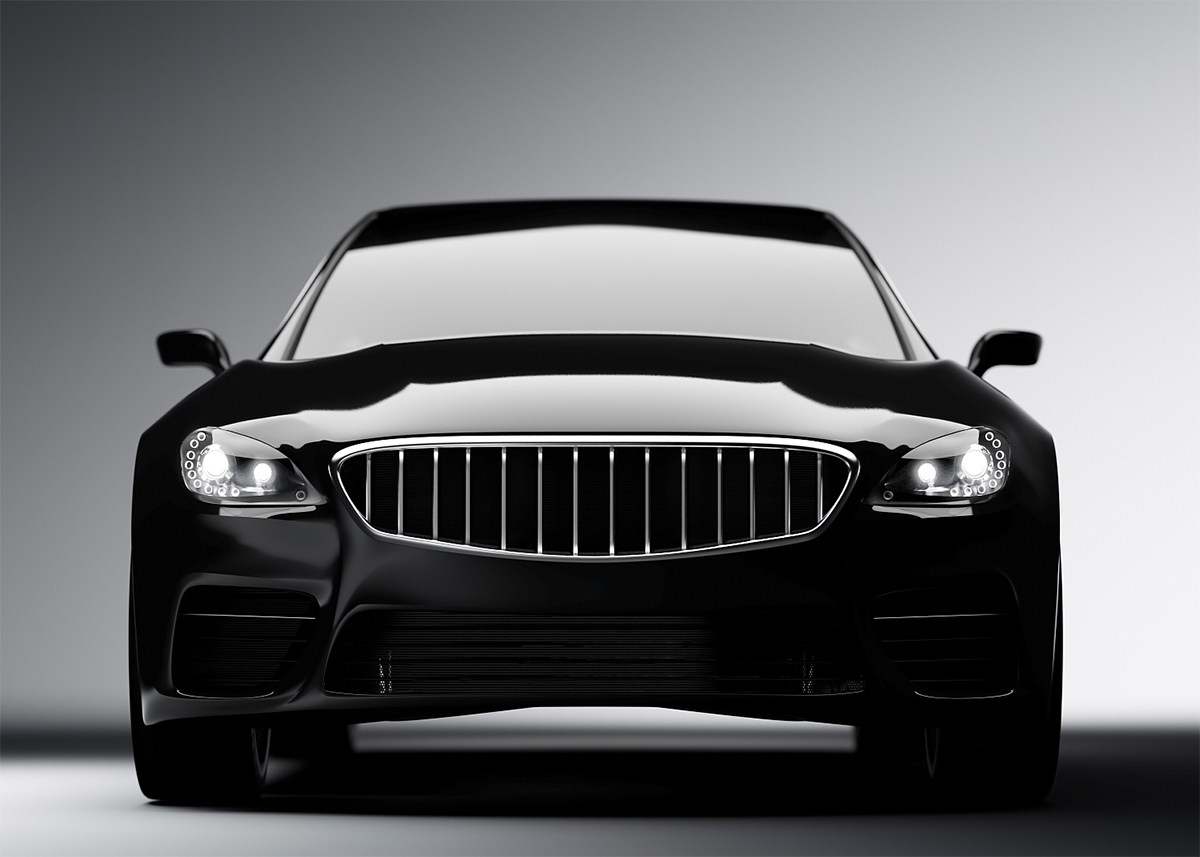
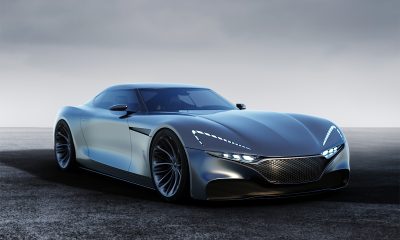
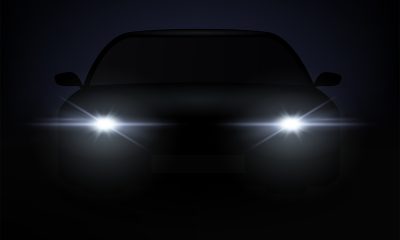


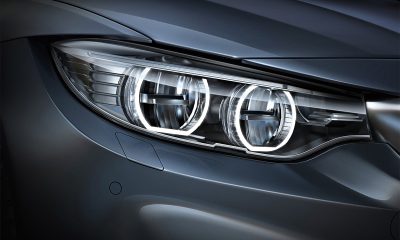
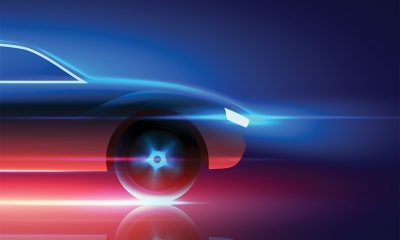

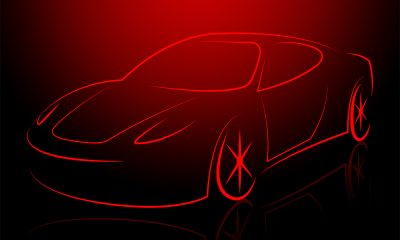


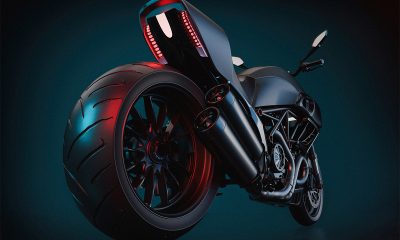
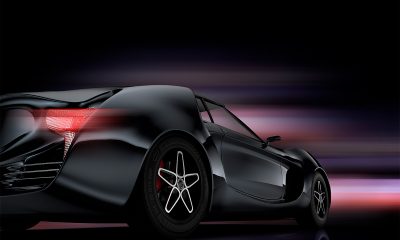





Loading...